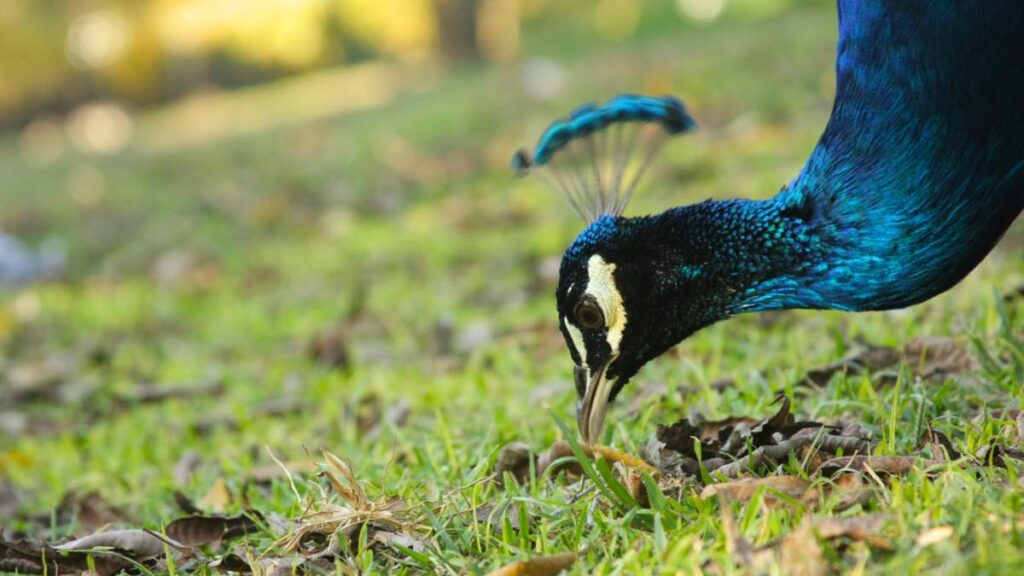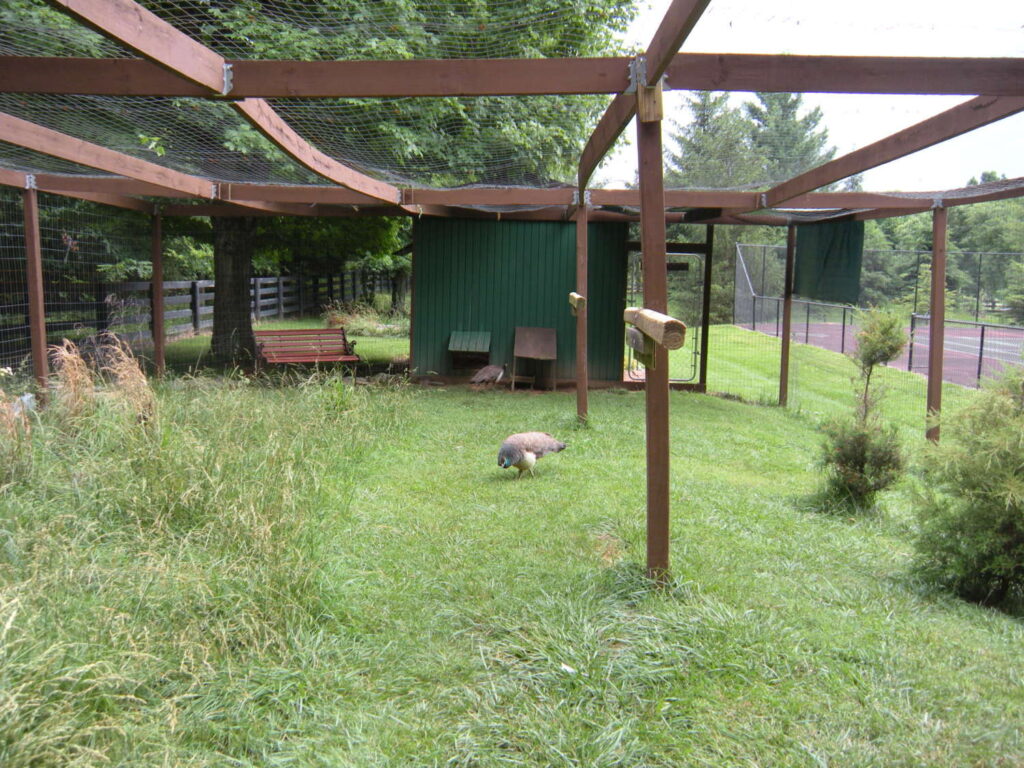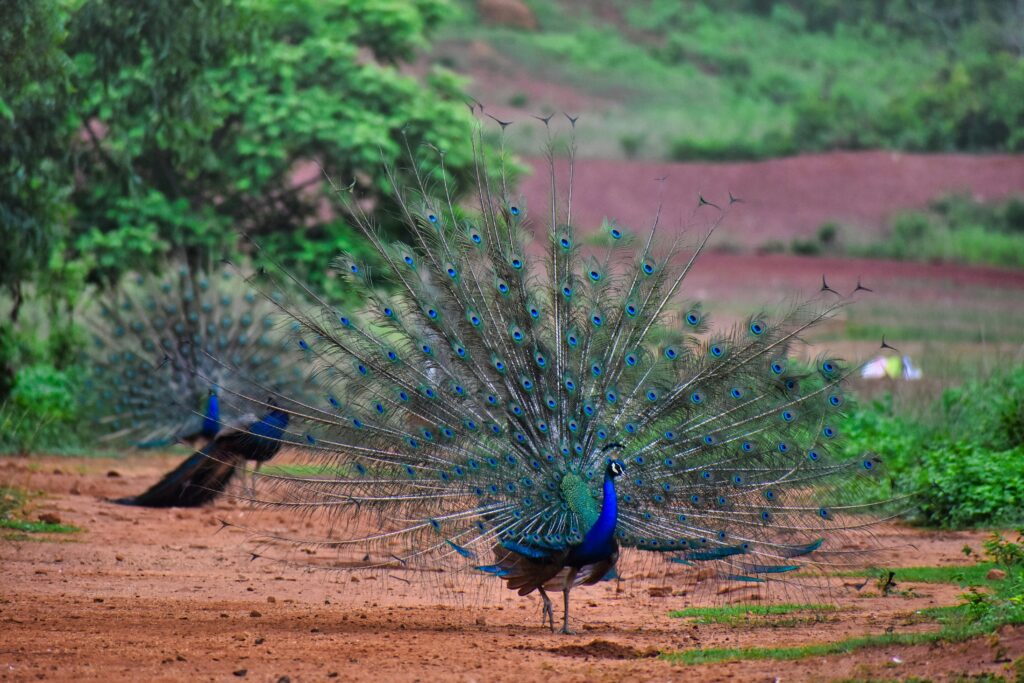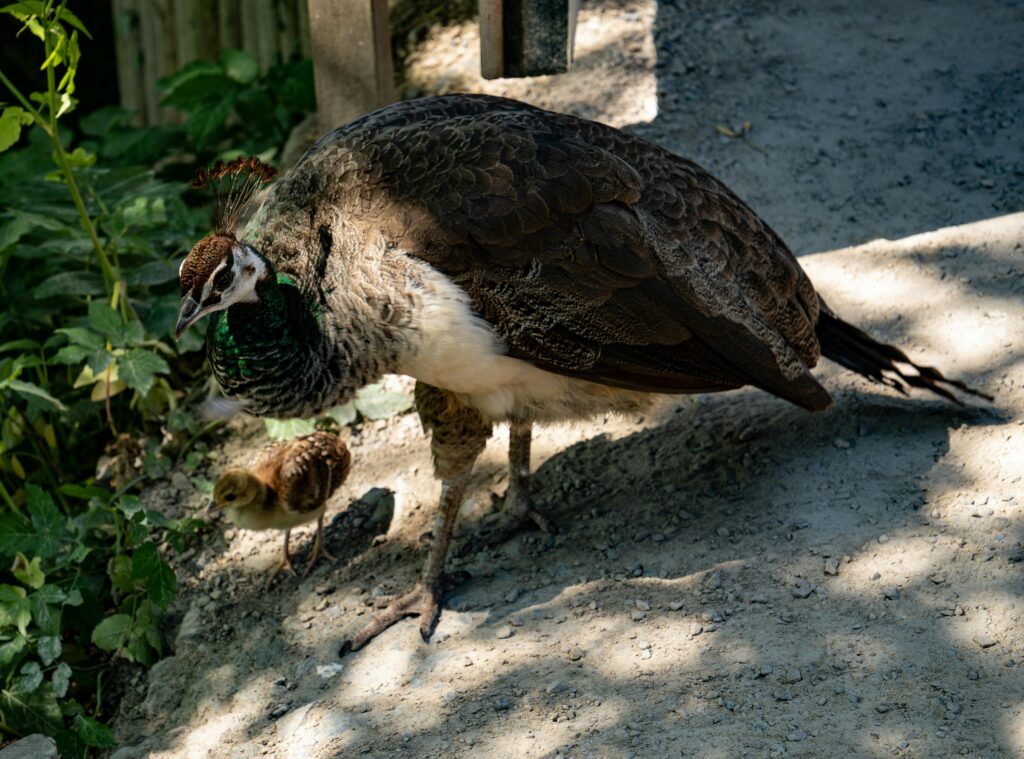Caring for peacocks is a rewarding endeavor that requires dedication, knowledge, and a genuine love for these majestic birds.
Peacocks, with their resplendent plumage and captivating displays, have long been admired for their beauty and grace. Belonging to the pheasant family, peafowl are native to Asia and are divided into three species: the Indian peafowl (Pavo cristatus), the Green peafowl (Pavo muticus), and the Congo peafowl (Afropavo congensis). Among these, the Indian peafowl, characterized by its striking blue and green plumage, is the most widely recognized and kept in captivity.

In addition to their stunning appearance, peacocks are known for their distinctive calls and elaborate courtship rituals, making them a popular choice for aviaries, zoos, and private collections worldwide.
Understanding Peacocks
Before delving into the intricacies of caring for peacocks, it’s essential to understand their natural behavior and habitat requirements. Peafowl are highly social birds that thrive in environments with ample space to roam and explore. They are omnivorous by nature, feeding on a diet that includes seeds, grains, insects, and small vertebrates. Peacocks are renowned for their impressive courtship displays, where males fan out their iridescent tail feathers and vocalize to attract mates. These displays not only serve a reproductive purpose but also play a crucial role in establishing social hierarchies within peafowl flocks.

Caring For Peacocks
Diet
Domestic peafowl are omnivores, much like their wild counterparts, and will forage for a variety of foods on their own if given the freedom to roam. However, farmed peafowl need additional food in addition to what they can get outside, unlike wild peafowl.
Pheasant and/or game bird feed is preferable to chicken feed. Other kinds of grains and pellets for birds are available, so be sure to ask around to discover what else there in your area. Peafowl also require at least 20% protein in their diet to be healthy. Dry cat and dog food is an excellent source of additional protein if you are unable to find a feed with such a high protein level.
However, be aware that neither of these meals has enough protein to serve as the birds’ only supply of protein. Additionally, if your peafowl free roam in a location with abundant of flora, they may obtain most of their required protein from insects, so you won’t need to offer dog or cat food throughout the summer.
Peafowl like consuming various snacks and leftovers from tables. The most popular treat is corn. Other healthful pleasures are dark greens, fruits, vegetables, meat leftovers, mealworms, seeds, oats, and grains. Be aware that they need to make up no more than 10% to 15% of their daily intake. In addition to various grains, you should give your peafowl some plants if they are housed in elevated quarters.

There should always be fresh water available. It is also possible to add specific medication to the water to prevent various illnesses. Adding apple cider vinegar to water is a terrific idea. It supports healthy respiration and digestion. Due to their size, peafowl consume two to three cups of water daily. Tubs, water troughs, and huge waterers are therefore essential. When the birds are young, you can use shallow water containers to keep them from drowning, but after they are mature, stay away from small containers.
Although you should always make sure the water and food supplies are checked and that the birds are never left without water, you can feed them anyway you like. Free choice feeding entails putting the food in toughs and letting the birds eat as much and as often as they like. Hand feeding, of course, involves feeding the birds by hand, which will keep them tamer and establish a routine with you. However, bossy peafowl have been known to hoard food, which leaves the other birds without any food at all. For this reason, if you have a large flock of birds, free choice feeding is probably the best option.
Space and Housing Requirements
Like any other poultry, peafowl need space to wander about and play as well as protection. Because their tails may grow up to five feet in length, peacocks require extra space if you keep them!
Space
A pair of peafowl should fit in 200 square feet, as each bird requires 100 square feet. The width and height of the coop itself should be at least 7 feet.
Roosts
Since wild ducks prefer to snooze in trees, they will wish to spend the night perched in the air on a roost. Your birds’ long tails require you to design a lofty coop so they may roost without bumping into their heads or crushing their tails. Make the roosts out of 2X4″ wooden planks. If you utilize metal for roosts, you will have a terrible wintertime frostbite situation.
The Pen/Run
Peafowl love to fly and run, thus these are two factors you must take into account while building the run. (Clipping one or both wings is insufficient to contain them within a 5-foot perimeter!) These birds will find a way out of the run if it isn’t totally enclosed if you don’t want them to escape.
Because peafowl have a propensity to fright and fly straight up into the air and smash on the roof, you should use netting for the ceiling. You do not want their heads to be injured by hard wood. Netting is a good option for a roof since it can bend and move in response to external forces.

The Ground/Bedding
When creating your pea pen design, the foundation is crucial. Peafowl find it unpleasant to stomp around on hardwood floors without any objects to nibble on. They also run the danger of developing bumble foot. Additionally, avoid building on soft ground since this can get wet in the rain, breaking feathers and creating disease. Building atop concrete is beneficial since it keeps bumblefoot and burrowing predators at bay and doesn’t grow dirty or moldy.
Straw is likely your best bet when it comes to bedding in the shaded area of the enclosure. It avoids boredom and retains heat in the cold. However, when wet, it becomes moldy and causes respiratory problems, therefore use it only in a location that is protected from snow and rain.
The Barriers
You should construct the pen’s walls out of a material that will keep your birds from sticking their heads through at ground level. Additionally, the walls shouldn’t have sharp edges where your peafowl may cut itself.

Concerns about Predators
You must be mindful of potential predators if you decide to allow your peafowl to wander your land. Giving them the freedom to go about can keep you entertained for many happy hours. However, such predators still pose a threat. Your peas will make a tasty feast for coyotes, bobcats, raccoons, foxes, domestic dogs, and other large creatures! In the first place, you don’t want our peafowl to be in danger!
Ensure that the lowest portion of your fencing is free of any gaps or holes. For hiding holes, hardware cloth or chicken wire work best.
Don’t forget to lock all of the doors at night. Depending on the style of door, latches, carabineers, and even deadbolts are all excellent options. To keep predators out, keep in mind that roofs need to be strong and in good shape.
Caring for Peacocks in Winter
Winter poses unique challenges for peacock owners, especially considering these birds originate from warmer climates. As temperatures drop, it’s essential to take extra precautions to ensure the well-being of your peacocks. Typically, peacocks can tolerate temperatures as low as 40°F (4°C) without issue, but prolonged exposure to colder temperatures can be detrimental to their health.
Providing adequate shelter is paramount during winter. Peacocks should have access to a warm and dry shelter that protects them from harsh weather conditions. Ensure the shelter is well-insulated and free from drafts, with plenty of bedding to keep them cozy during chilly nights.
Adjusting their diet is also crucial during winter months. Peacocks may require additional calories to maintain their body temperature. Consider supplementing their diet with high-energy foods such as cracked corn, sunflower seeds, and mealworms. Fresh water should be provided regularly, ensuring it doesn’t freeze over.

Monitoring your peacocks’ health is essential during winter. They may be more susceptible to respiratory infections and other cold-related illnesses. Ensure their shelter is well-ventilated to prevent the buildup of moisture, which can contribute to respiratory issues. Keep a close eye on their behavior and appearance, and consult a veterinarian if you notice any signs of illness.
Preventing frostbite is another concern during winter. Peacocks’ exposed combs and wattles are vulnerable to frostbite in freezing temperatures. Apply a thin layer of petroleum jelly to these areas to help protect them from frostbite. Additionally, provide extra bedding in their shelter to keep them off the cold ground.
Limiting outdoor exposure is advisable during extreme cold spells. If possible, provide access to a heated area where they can retreat during particularly cold days and nights. By taking these precautions and providing extra care during winter, you can ensure your peacocks remain healthy and comfortable throughout the colder months, allowing them to thrive year-round.
Conclusion
Caring for peacocks is a fulfilling journey that requires dedication, knowledge, and a genuine love for these majestic birds. From understanding their unique dietary needs to creating the perfect habitat, this comprehensive guide has provided you with all the essential information to ensure the well-being and happiness of your peacocks.
By providing them with a suitable habitat, a balanced diet, regular healthcare, and positive interaction, you can ensure they lead happy and healthy lives in your care. Remember, each peacock is unique, so tailor your care approach to meet their individual needs and preferences.
Peacocks, with their resplendent plumage and captivating displays, have long been admired for their beauty and grace. Whether you’re a seasoned enthusiast or a novice considering adding peafowl to your flock, the knowledge and insights shared in this guide will help you embark on a rewarding journey of peacock care.
With proper care and attention, your peacocks will continue to enchant you with their beauty and grace for years to come. So, embrace the art of caring for peacocks and witness the joy and wonder they bring to your life.
